Do you feel overwhelmed while deciding between Dropshipping and Amazon FBA? Which is the best eCommerce platform to start an online business? If you are too stuck between these questions, the answer is here in the post. So let’s read the details; and entire comparison points to decide on a better way.
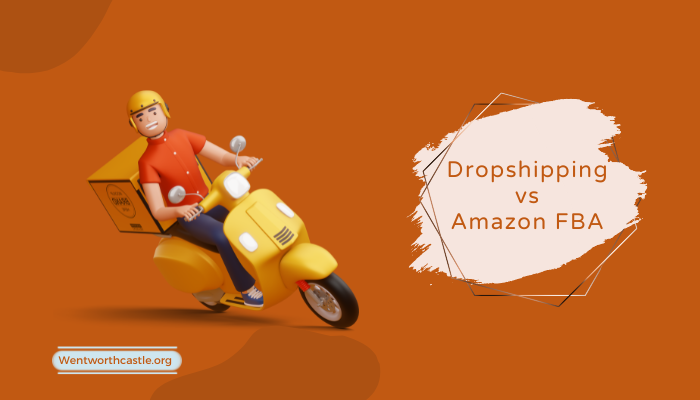
With the rising trend of online shopping, running an eCommerce business has proven to be the most profitable way to earn income. As a result, Amazon is constantly growing year after year, dropshipping making its way to excel in the marketplace.
So, if you intend to start an eCommerce business with a limited budget, you’ve to look after the odds and even of both eCommerce platforms.
In this post, I’ve covered everything you, a beginner, need to know before investing. The in-depth analysis will help you to make the right decision.
Dropshipping Vs Amazon FBA – An Overview
Before you jump to the investment, only looking at the size of the platform, it is crucial to know that Amazon FBA and dropshipping both have different business operational models. So, there’ll be a huge difference between these platforms. So let’s start with an overview.
What is Dropshipping?
Dropshipping is one of the best eCommerce business solutions where the sellers/retailers directly place the order from the wholesale company and ship the goods to the customers. Here, the seller acts as a middleman who takes orders from a wholesaler and sends them to the customers.
The business is trending as vendors think it is cost-effective and easy to start. According to a recent survey, the global dropshipping market size will exceed 28.8% in 2019-2025, and most retailers in the UK, USA, Canada, Australia, and other countries are now using dropshipping. As per this, Black Friday Statistics around, $9.8 billion was spent on Black Friday 2023 which includes some portion for Dropshipping. The Moving Average Method study predicts Black Friday sales will surpass $11 billion this year.
The individual doesn’t need to make a massive investment to start a dropshipping business. Even a low-scale trader can easily reap the eCommerce business model’s benefits.
What is Amazon FBA?
Amazon FBA (Fulfilment by Amazon) is the best eCommerce business solution that supports sellers and merchants who want to sell their products on Amazon to make an income. The platform is known for its biggest marketplace and stable business growth.
In 2020, more than 1.3 million new sellers joined the FBA program; solely India contributed 21.1% of the new sellers’ record. Of 1.3 million, 13.8% of sellers are from the USA only and sign up through Amazon.com.
It receives stable growth every year and has a vast marketplace, so many vendors want to try their luck in the Amazon FBA business. Furthermore, FBA allows all individual sellers and business persons to start their businesses for a fruitful outcome.
What is the difference between Amazon FBA and Dropshipping?
The difference between Amazon FBA and dropshipping is a common question for those looking to start an online business. With Amazon FBA, you use a fulfillment service provided by Amazon to store, package, and ship your products to customers.
In contrast, dropshipping is a model where the seller does not keep any inventory and instead relies on third parties to fulfill orders. Dropshipping usually involves selling products on the Amazon Marketplace or other marketplaces and having them shipped directly from the supplier’s warehouse.
Both models can be very successful in 2023, but some key differences in cost, time, and customer experience should be considered when comparing Amazon FBA vs dropshipping.
Using an Amazon fulfillment service can reduce costs associated with maintaining an inventory of products and provide access to discounts on shipping rates through the Amazon business platform.
Dropshipping VS Amazon FBA – Quick Comparison Table
Before you delve into the in-depth analysis of these eCommerce business platforms, read the table below. This will give an overview of the dropshipping business model and Amazon FBA.
| Factors to Consider | Dropshipping | Amazon FBA |
|---|---|---|
| Investment | Low | High for the business person |
| Risk | Low | High |
| Profit margin | Low | High |
| Customer base | Small | Large |
| Direct customer contact | Yes | No |
| Shipping | High risk | Low risk |
| Drive external traffic | Hard | Easy |
| Customer base | Small | High |
| Competition | High | High |
How does Dropshipping Work?
When you work as a dropshipping partner, you connect with the wholesalers to place the order and sell it to customers. The business work as follows:
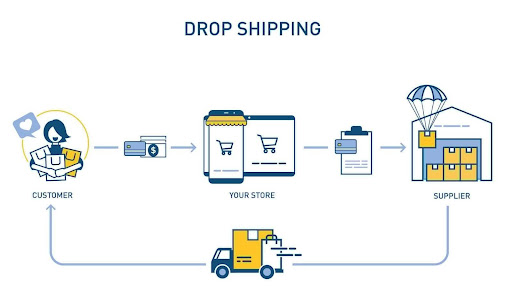
- You agree with the Dropshipping supplier who sources products or manufactures them.
- The dropshipping supplier will store the products and manage inventory stock.
- You will host the eCommerce website.
- The customer places the order, and you will process the payment and order.
- You will forward the order to the dropshipping services, and they will prepare the order. Once an order is ready, they ship the item to the customers.
Here, you are the middlemen taking the order, sending it to the supplier, and informing the customer about the products. The rest of the work of preparing orders and shipping will be processed by the seller to the customer.
How does Amazon FBA work?
Fulfillment by Amazon is the process of packaging, storing, and shipping orders to Amazon. The program is for sellers who want to sell their products on this eCommerce website. Moreover, Amazon handles returns and exchanges of orders.
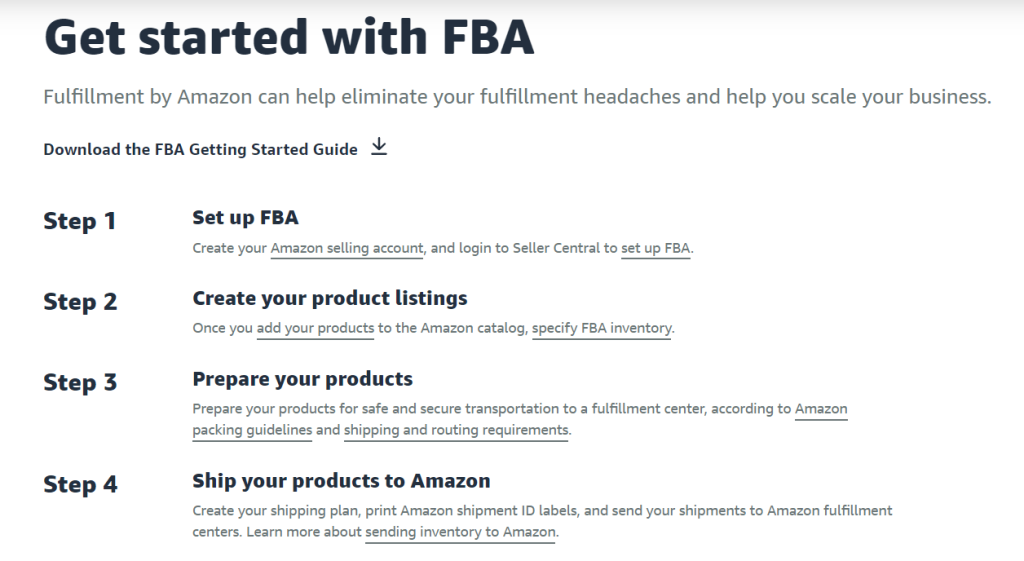
By joining the Amazon FBA program, you can be an FBA merchant and send your products to the FBA center to sell and earn income. The program runs as follows:
- Set up the FBA account. You can log in to Seller Central if you want to create an account.
- Once you register as an FBA seller, create your product list and add it to the Amazon catalog.
- Prepare the products for secure transportation to the FBA center. Make sure to follow the Amazon packaging guidelines and requirements of the packaging to avoid any issues.
- Create your shipping plan, print the ID labels, and send the shipment to the Amazon FBA center.
You can start selling the products as an individual seller and business person. Individual sellers can start their businesses without paying the charges. However, charges will be applied to the product item that you sell.
Dropshipping VS Amazon FBA – Key Differences
Dropshipping and Amazon FBA have two different operating models, so there will be a huge difference between their features. So let’s have a look.
Fee and Investment:
You focus on that eCommerce business that doesn’t break your back if you’ve got a limited budget. Luckily, both business models require minimum investment. However, unlike Amazon FBA, dropshipping can be started with the least investment.
Whether you start dropshipping with Shopify or Amazon, you can get the dropshipping services at the least cost. But if you want to start as a seller on FBA, you must pay the fee for your product.
If you are an individual seller, Amazon will cost you $0.99 for the item you sell.
Also, if you choose the FBA professional plan, it will cost you $35.99/month. Some additional fees will also include such as referral fees, warehouse charges, and many more. So, in terms of investment and fees, dropshipping is better than Amazon FBA.
Shipping Logistic:
Dropshipping has the risk of poor shipping quality because the retailer needs to take responsibility for the shipment of the products to elite customers. Therefore, to maintain the shipping quality, you need to find a reliable dropshipping supplier who takes care of the shipping process.
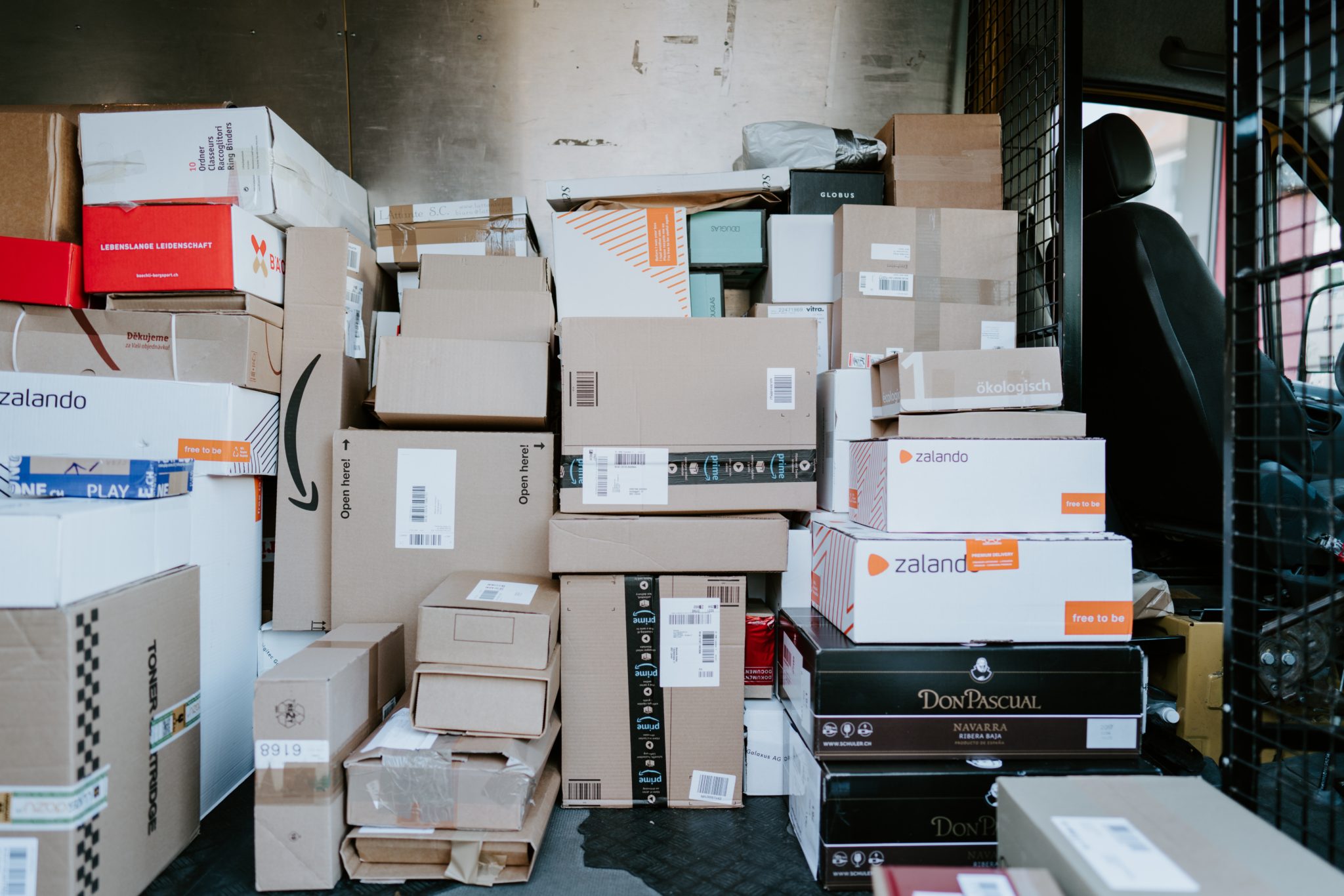
On the other hand, if you join as a seller on FBA, the Amazon team takes responsibility for storing, packaging, managing, and shipping the products to send to the customers. In addition, they maintain high shipping quality.
So, Amazon FBA would receive the upper hand if anyone talks about the shipping logistics. However for the international clientele, the FBA may receive contradictory statements and can’t deliver in other countries.
Inventory Management:
The actual difference between the dropshipping and Amazon FBA models is here. In dropshipping, you don’t need to have inventory management. Instead, you only act as an intermediate between the supplier and the customers. This means you are helping the clientele connect with the suppliers and make some money by facilitating sales.
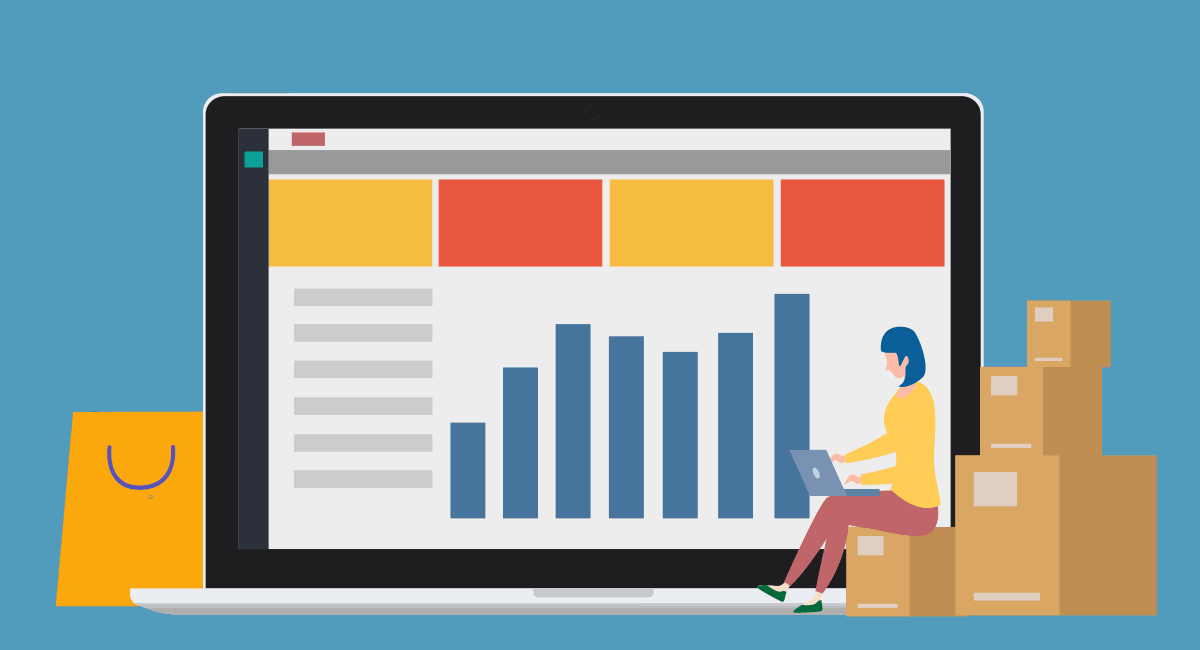
On the other hand, the FBA offers stock management and warehousing facilities. They stock up on your products in their warehouses. However, you may need to pay the charge of warehousing, which is negligible. Therefore, inventory management is a crucial thing of the Amazon FBA business.
Selling Channel:
Amazon is brand new and has a wider customer base than dropshipping stores. As a result, you get assured traffic to catch customers from multiple selling channels and campaign routes at Amazon.
However, if you choose the dropshipping business, you may have yet to ensure traffic. Instead, it depends on your marketing strategy.
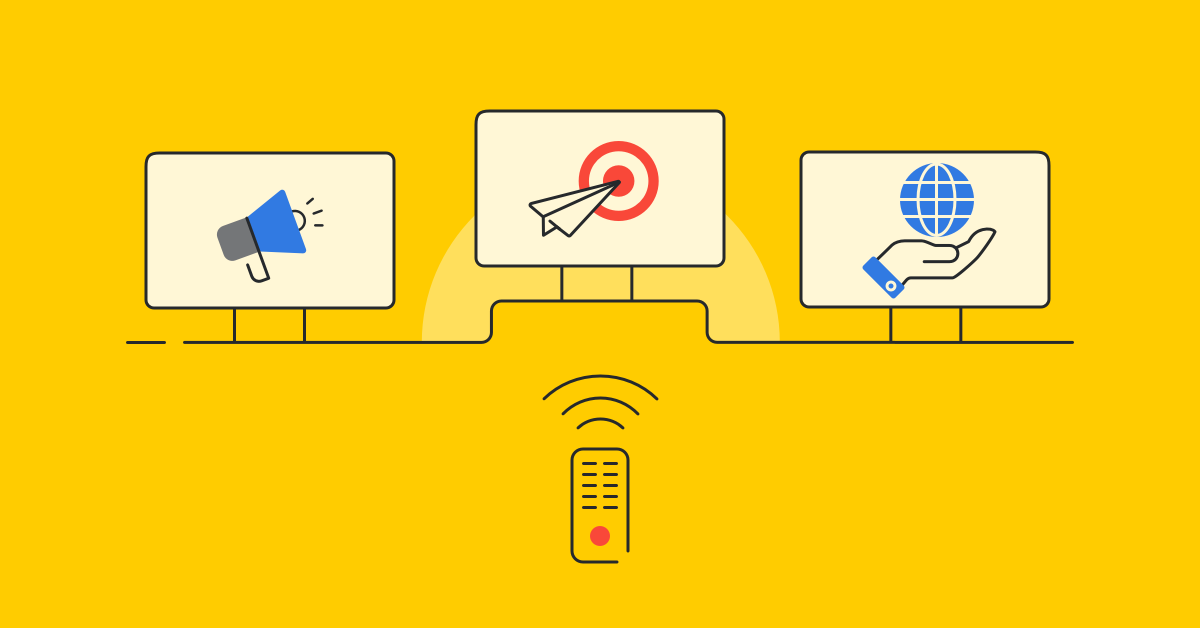
It may take time to take a stand in the market. In that case, Amazon may have a better selling channel that allows your online store to shine brighter and grab sales opportunities to earn income.
Competition:
Competition is everywhere, whether you choose FBA or Dropshipping. However, on FBA, you face many challenges because sellers try to pull customers’ attention. Also, the Amazon FBA is best for experienced entrepreneurs who know how to enjoy maximum selling by beating the competition.
Since it has competition, but Amazon does offer a lot of traffic, the chances of the winner will be improved. A similar thing you may experience with dropshipping.
Here, you compete with the retailers who sell products at competitive prices. So there will be tough competition between the wholesalers trying to compel the audience with lucrative deals.
Profit Margin:
Of course, you are choosing a business model for making maximum profit. Luckily, both the Amazon FBA and Dropshipping are profitable, but the question is how much profit you can make. Dropshipping is best if you aim to make more profit by selling limited goods. This will allow you to earn 15-20% of the profit from each good you sell.
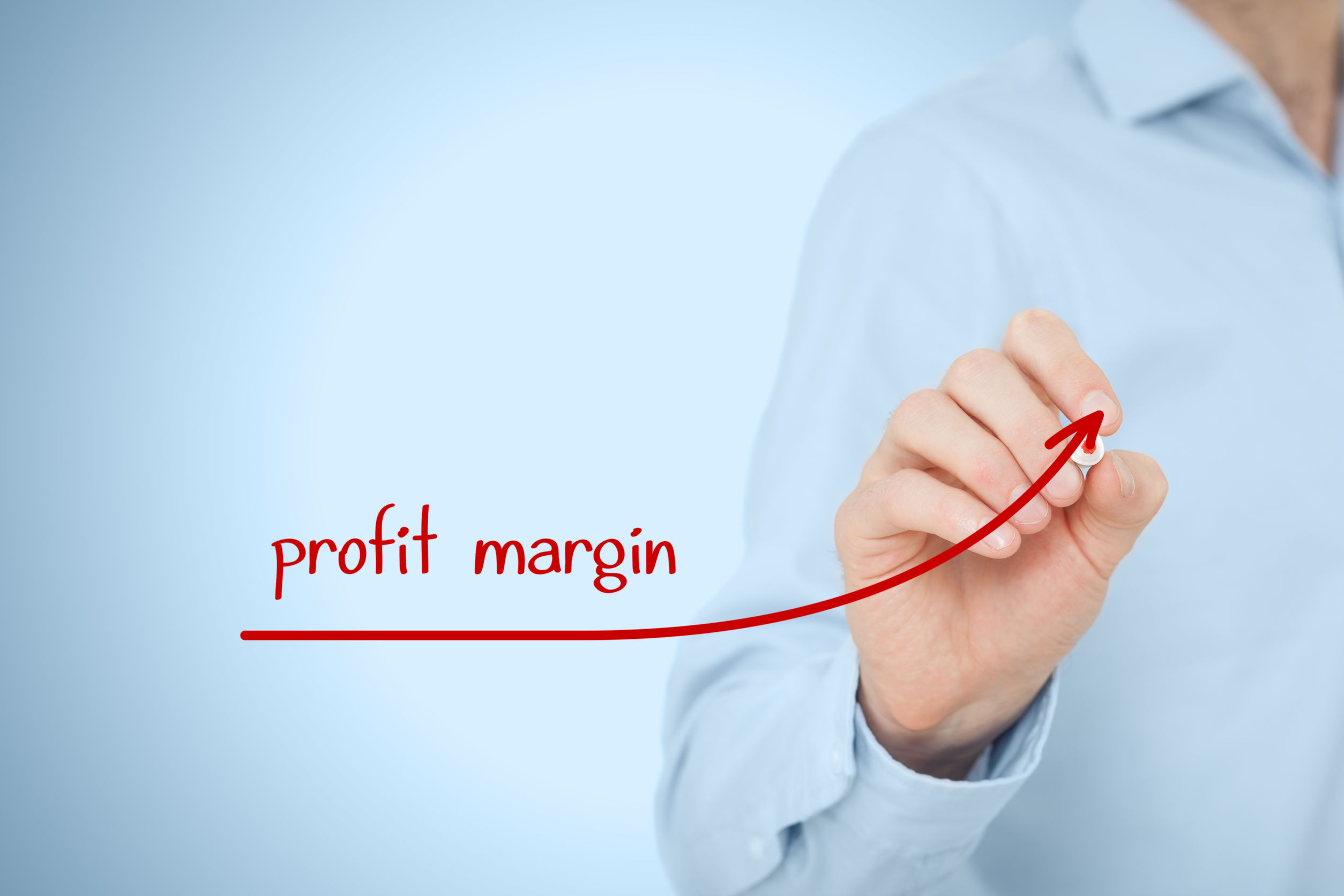
However, the profit margin here depends on the cost of goods that you sell. Plus, you can increase and decrease the profit margin too. However, with Amazon FBA, the profit margin will be different. It depends on the amount of margin you keep as profit. It may be between 1-5% and even as high as 30% and more.
The advanced sellers keep a high profit margin as they have many products to sell on Amazon. So, it depends on you what profit margin you want to keep and how many products you want to sell. The higher the profit margin, the more income you earn.
Control of Seller Account:
Which offers better control, Dropshipping or Amazon FBA? This is an obvious question from a lot of sellers. Most sellers like full control of their seller account, which can only be possible with dropshipping. Dropshipping business models allow you to control marketing, selling accounts, profit, and other things.
This means you are the owner of your business, not others. Even if your dropshipping account gets suspended from Google, you can still make new emails and start your business. However, with Amazon FBA, you can’t enjoy full control.
Amazon’s algorithm and reviews are still in control of the FBA. You never know when Amazon can suspend you from your FBA account. So, your business will be at greater risk.
Marketing for Profitable Sales:
Driving traffic on the platform is foremost if you want to grow the business. To drive traffic, you need to use various marketing strategies that can help to achieve more sales. Fortunately, if you are an FBA seller, you can leverage the Amazon keyword finder tool that helps to provide the right traffic-driven keywords.
Many entrepreneurs have access to the tool to get the right keywords and optimize their product list to drive more sales. The keywords help rank the product on the top of the Amazon search page so your product can catch traffic.
You get organic traffic, but the problem is you don’t have control over the Amazon algorithm. It works automatically. So, it would be difficult for beginners to stay on the top page in the presence of advanced sellers.
But if you’re thinking of having the best dropshipping site and want to get high traffic, you have to join the hands of paid advertisement services such as PPC, Google Ads, and many more. Though it requires a budget plan to run paid advertisements, it would be worth generating more traffic on your platform.
Customer Support:
Both platforms offer a robust customer support system to answer customer queries. However, the Amazon FBA is far better as it offers phone contact, and users can even submit the query by filling out the form. Unfortunately, the dry customer support system doesn’t allow us to answer quick queries.
Dropshipping VS Amazon FBA: Pros and Cons
The debate always ends with knowing the pros and cons of the businesses. So, let’s read about the pros and cons to determine which business model wins.
- Dropshipping doesn’t demand massive investment, nor does it require any solid establishment to start this eCommerce business.
- The risk is negligible because you don’t need to maintain the inventory stock. The only thing you need to maintain is your store.
- You don’t need to bother about packaging orders because sellers will do it on your behalf of you and handle all the shipments.
- Dropshipping isn’t time-consuming because you are just placing an order, and the rest of the work will be done by sellers.
- You can start and do business from anywhere without having any geographical boundaries. Everything in dropshipping is online, which you can maintain from anywhere.
- The profit margin in the dropshipping business is low because the market is immensely competitive.
- Lack of promotional deals and customer service issues
- Amazon FBA allows you enough time to scale your business and has excellent customer service.
- Provide marketing tools and have successive growth for establishing your brand name so that you can earn maximum profit
- Easy return and replacement policies for a better customer experience
- Amazon FBA has a vast customer base that keeps on expanding. So, you can enjoy massive growth and profitable business
- Stable growth and Amazon SEO service to rank your products
- There is high competition and shipping problems.
- You’re not able to maintain the record of the stocks.
Dropshipping vs Amazon FBA: Which One is Better For Your Business?
Dropshipping and Amazon FBA are two popular e-commerce fulfillment methods. Both have their own advantages and disadvantages, so the best option for you will depend on your specific business needs.
Dropshipping:
With Dropshipping, you don’t purchase any inventory upfront. When a customer places an order, you buy the product from a supplier who ships it directly to them. This means less money tied up in inventory and lower startup costs. But you also have less control over shipping speed and the overall customer experience. Shipping can take 1-2 weeks, which some customers find annoying.
Amazon FBA:
Amazon FBA requires stocking inventory in Amazon’s warehouses ahead of time. But then Amazon handles storage, packing, and shipping orders out quickly. Customers love the fast Prime delivery. The catch is you have to pay Amazon fees for these fulfillment services, which cut into profits. More money’s tied up in inventory too.
Dropshipping is great for new businesses focused on minimizing initial costs and risks. Amazon FBA works better once you’re established and ready to invest more to reach that next level of growth.
Dropshipping Vs Amazon FBA: Which Is Better For Beginners?
When considering which business model to use for your e-commerce store, deciding between Dropshipping and Amazon FBA can be unclear. Both models have pros and cons, making it difficult to determine which is best for beginners.
Dropshipping is a great way to get started with an online store, as there is no need to purchase or store inventory. However, if you want more control over the fulfillment process and are willing to invest in stocking up on inventory upfront, then using FBA may be a better option.
With FBA, Amazon takes care of your storage, packaging, shipping, and customer service. On the other hand, dropshipping allows you to handle all these aspects yourself. In 2023 Dropshipping will be a great way to start a business if you want to get started in e-commerce without having to invest large amounts of money into inventory.
With Dropshipping, you can find suppliers and source products that fit your needs and customers’ demands, order the items directly from the manufacturers or wholesalers, and then have the items shipped directly to your customers.
Related Read:
Conclusion: Dropshipping Vs Amazon FBA
So, here you go! The eCommerce business model is excellent for achieving a successful business. However, dropshipping is easy to start as compared to the Amazon FBA business. It requires less investment and is ideal for all kinds of business people.
But if you have a worthier product that you believe can generate sales, the Amazon FBA business is worth starting. You can also start dropshipping with Amazon too. So, hopefully, the article solves all your queries and helps you decide which business model can be beneficial for you.
Frequently Asked Questions

This is Wagner, an experienced Amazon FBA expert, and eCommerce enthusiast. With years of experience selling on Amazon, I got a wealth of knowledge to share with fellow sellers. In their writing, I cover a range of topics including Amazon FBA strategies, eCommerce trends, and online retail best practices.
